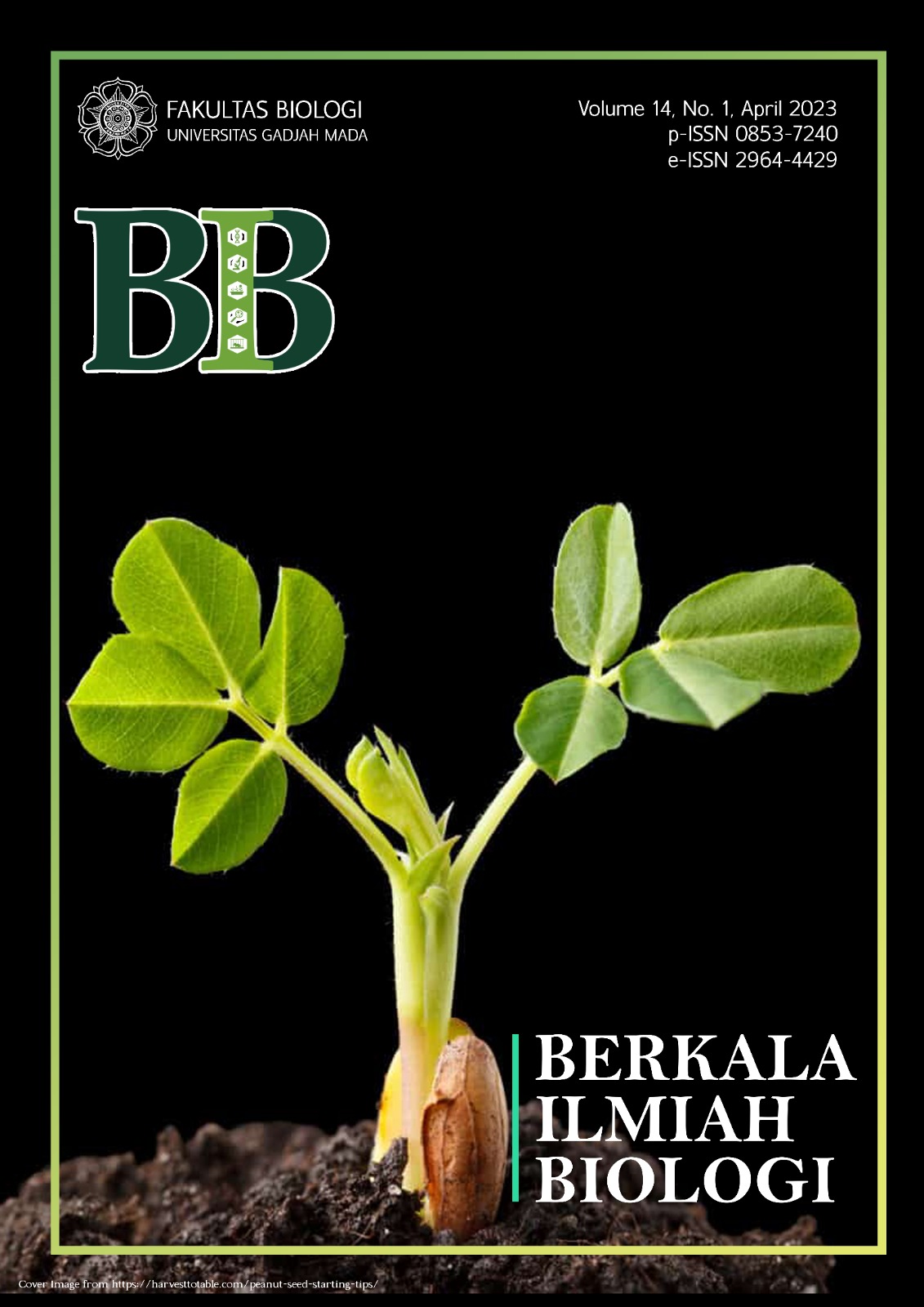Resistance of Three Maize Varieties to Downy Mildew Fungus Peronosclerospora maydis Infection
Main Article Content
Abstract
Maize (Zea mays L.) is one of the staple foodstuffs of the cereal group which has a high percentage of carbohydrates, protein, and others. In 2050, maize is expected to double in demand, however, productivity must be balanced with the support management of diseases and pests of maize. Common maize disease is Downy mildew caused by Peronosclerospora spp., this disease attacks the leaves and seeds with 100% damage. This research aimed to determine the pathogenicity and resistance of Talenta, Pioneer 21, and Tamara maize varieties, by using in vivo leaf insertion and leaf spray methods. Fungal isolates were isolated from threshing conidia from maize leaves in the Sleman area field. Observation of fungal pathogenicity and maize resistance was measured based on symptom scale per two days of test and observation of leaf anatomy 45 days after planting. Calculation of fungal pathogenicity against maize varieties used growth analysis, disease incidence, disease severity, Area Under the Disease Progress Curve (AUDPC), and severity unit per time. The result of this research showed that Talenta was moderately resistant, Pioneer-21 was resistant, and Tamara was susceptible to Downy mildew. Downy mildew pathogenicity rate reached 0,07 units/day. Downy mildew infection reached epidermis tissue through stomata on maize leaves.
Article Details

This work is licensed under a Creative Commons Attribution 4.0 International License.


